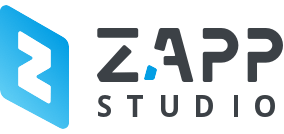Have you ever felt overwhelmed by the seemingly complex language of programmers and application developers? You’re not alone. The technical jargon can be bewildering for those outside the world of software development. But don’t worry, we’re here to make this journey easier to understand.
In this article, we’ll guide you through a glossary of key terms that every newcomer to the world of programming should know. From algorithms to version control, we’ll introduce you to each term in a clear and accessible way, so you can feel more confident as you explore the fascinating world of software development.
Algorithm:
A set of step-by-step instructions designed to solve a problem or perform a specific task in a computer program.
Variable:
A storage space in computer memory that contains a value that can change during program execution.
Loop:
A control structure that repeats a block of code several times until a specific condition is met.
Function:
A block of code that performs a specific task and can be called from other parts of the program.
Condition:
A Boolean expression that determines whether a block of code is executed based on certain circumstances.
User Interface (UI):
The visual appearance and user interaction with an application or website.
Database:
An organised system for storing and retrieving information efficiently.
efficiently.
Programming Language:
A set of rules and symbols used to write programs that instruct a computer how to perform specific tasks.
Framework:
A software structure that provides a basis for application development.
Compiler:
A program that translates source code written in a programming language into executable code.
Debugging:
The process of identifying and correcting errors or problems in a computer program.
IDE (Integrated Development Environment):
Software that provides integrated tools to facilitate application development.
Backend:
The part of an application that handles the behind-the-scenes logic and data manipulation.
Frontend:
The part of an application or website that interacts directly with users.
API (Application Programming Interface):
A set of rules and protocols that allow different applications to communicate with each other.
Git:
A version control system that tracks changes to source code during software development.
Repo (Repository):
An online storage space where a project’s source code files are stored and managed.
HTML (Hypertext Markup Language):
A markup language used to create web pages and web applications.
CSS (Cascading Style Sheets):
A language used to describe the presentation and style of an HTML document.
JavaScript:
A programming language used primarily to add interactivity and dynamism to web pages.
Mastering these terms will give you a solid understanding of the programming language and help you learn a little more about the exciting world of software development.


